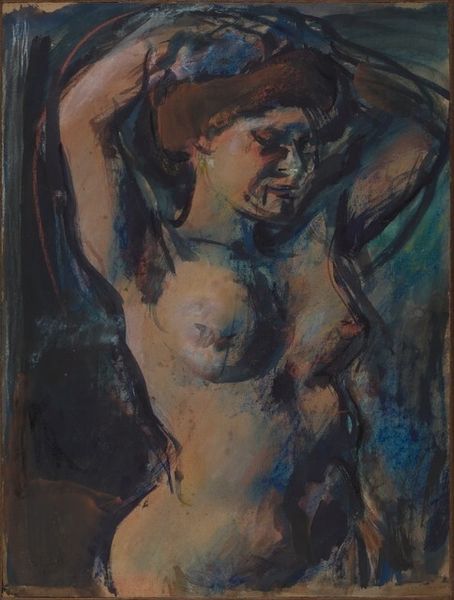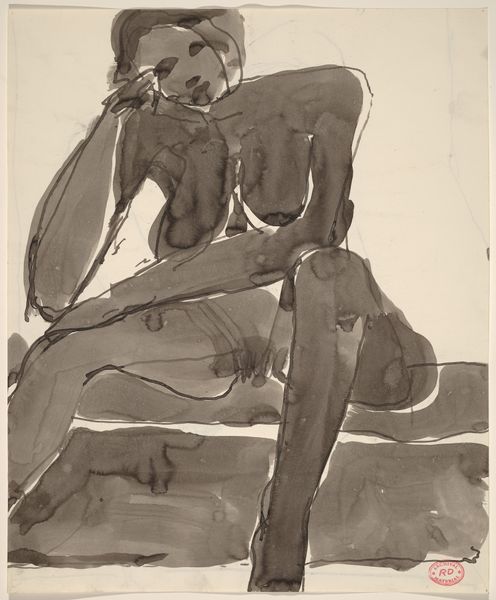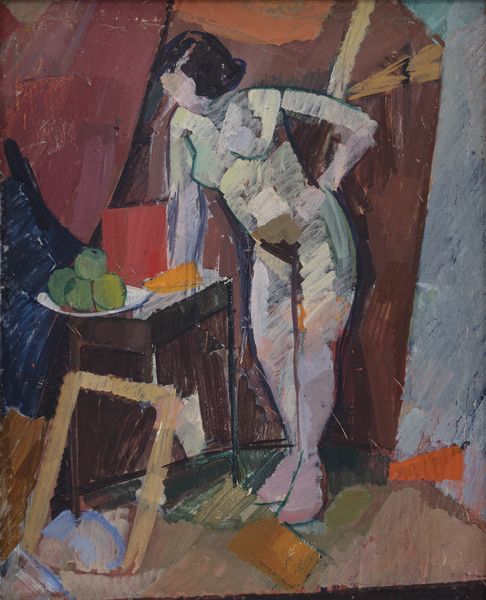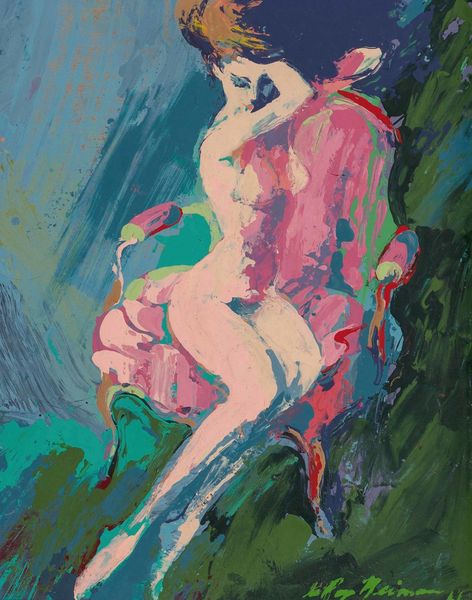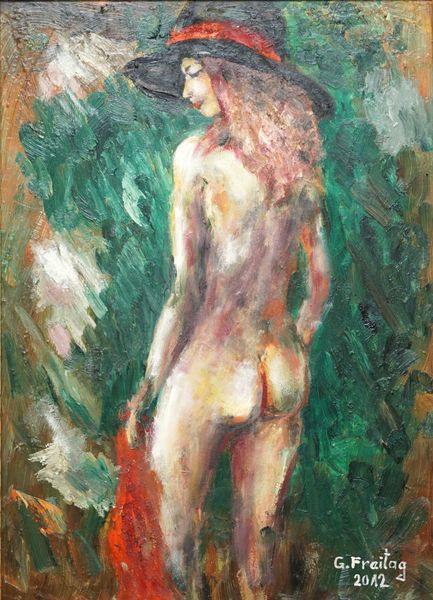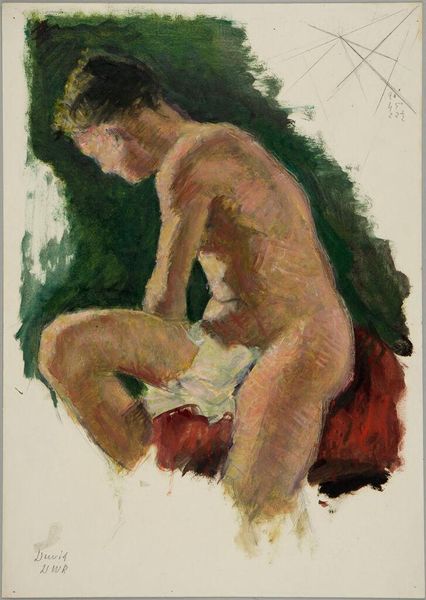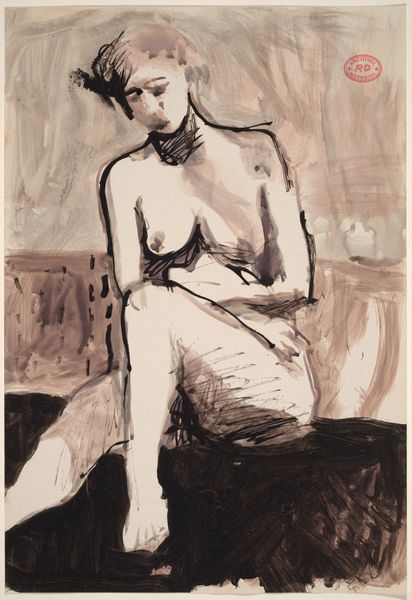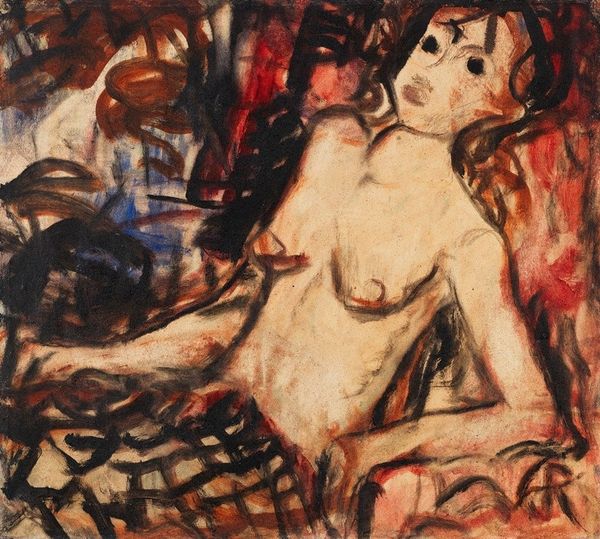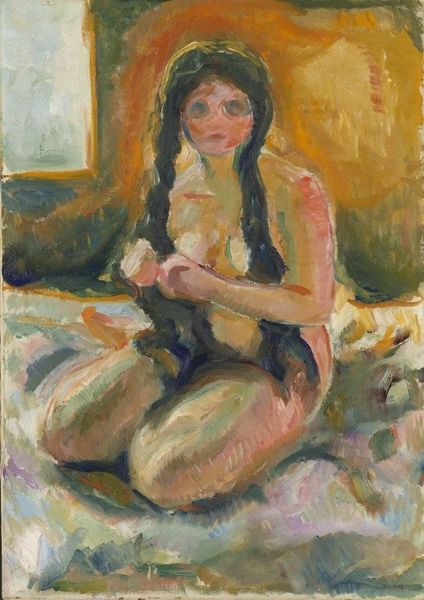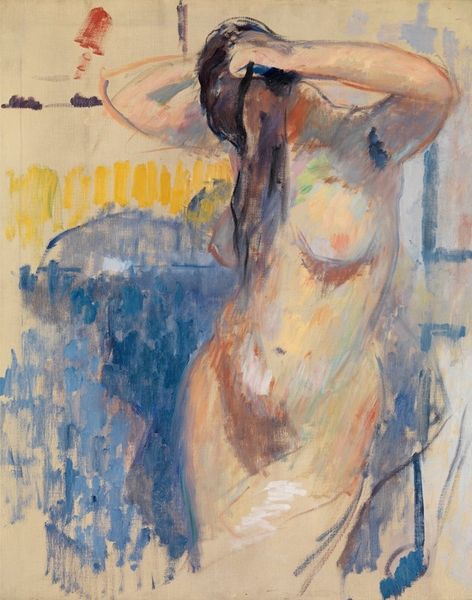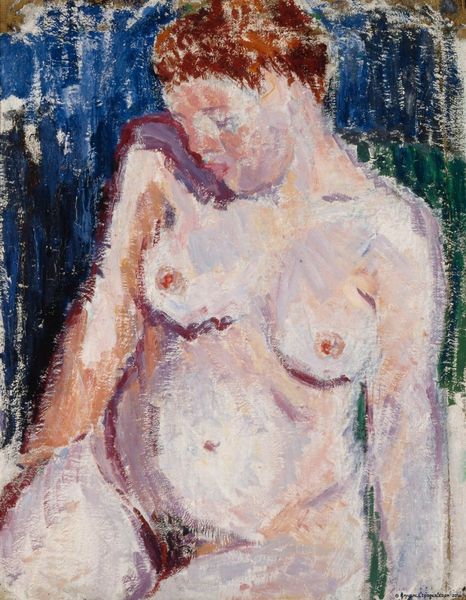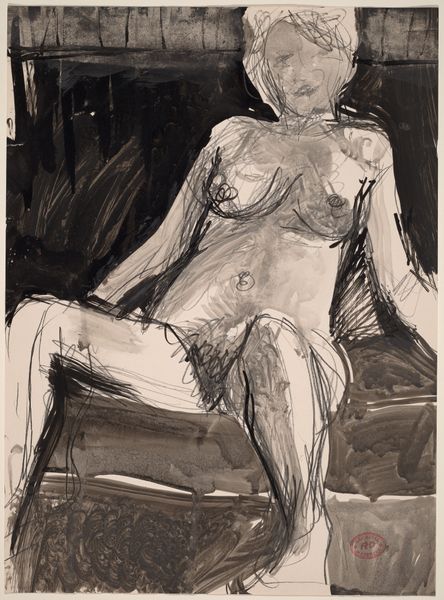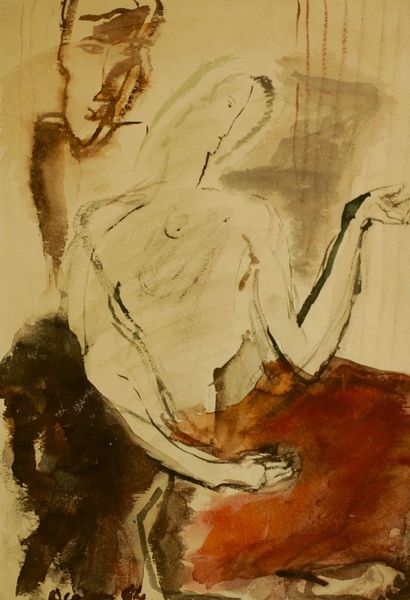
Copyright: Public domain
Curator: Here we have Alexandre Jacovleff’s 1938 piece titled “Nude.” The artist primarily worked with oil paint in creating this image, also making use of a drawing style that contributes to its distinct aesthetic. Editor: There’s a real vulnerability to this piece, an almost raw energy. It’s intriguing how the bold reds in the lips and cheeks contrast so starkly with the softer, almost tentative lines defining the rest of the figure. The use of black in her garments against the more sensual hues creates a compelling dynamic. Curator: Indeed. Jacovleff worked in a tumultuous period. One sees this figure as a challenge to the art institutions that generally depict women in more sanitized versions of glamour. How interesting is that contrast! The tension with this historical moment and the very public roles for female portraiture. Editor: Absolutely, it shifts the focus away from mere physical representation. I’m drawn to the textural quality, almost like layers of unearthed history—a building-up and scraping-away of oil paints revealing a body almost fought into existence. Look at the raw marks he employed; you feel the hand of the artist present in the artwork's facture. What’s fascinating to me is that you can perceive an interplay of the human condition with each visible brush stroke and material choice. Curator: You raise a key point in focusing our understanding toward a critical assessment, namely to analyze how artistic interpretations were and continue to be impacted through socio-political conditions. One needs only consider the historical representation of “nudes” as compared with Jacovleff's individual representation, and even more the circumstances surrounding his production during that specific period, as they continue to play into his reception today. Editor: Considering those visible brush strokes and their physicality within art historical moments reminds me of our obligation to continually challenge those highbrow separations in art. Material matters when reflecting on Jacovleff's artistic choices. It underscores labor and physicality in creating the form. Curator: I find that our discussion brought light to understanding Jacovleff's social critique but with an impressive understanding for the impact his social surroundings may have played in that artistic critique. Editor: The power of examining both production methods, materials, and historical context allows an evermore dynamic conversation on the socio-political meanings that exist in “Nude.”
Comments
No comments
Be the first to comment and join the conversation on the ultimate creative platform.
